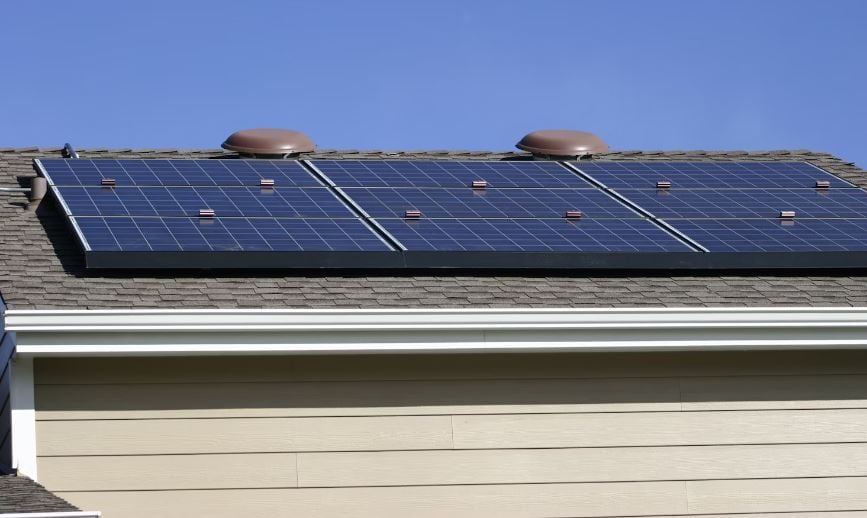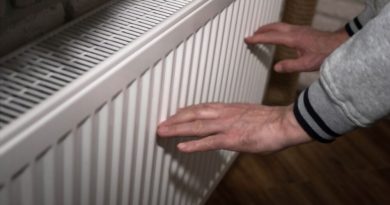How to Install Several Types of Energy Sources in Your Home
As homeowners look for ways to reduce energy bills and decrease their environmental impact, many are turning to multiple energy sources for their homes. By diversifying energy options, you can optimize your home’s energy efficiency and increase your energy independence. Installing a combination of energy sources—such as solar power, wind turbines, geothermal systems, and biomass energy—can help meet your household’s power needs while reducing reliance on traditional utilities. In this article, we’ll cover how to install three top energy sources for a more sustainable and efficient home.
- Installing Solar Power
Solar power is one of the most accessible and popular renewable energy sources for homeowners. Solar panels capture sunlight and convert it into electricity, which can power your home or be stored for later use. You can find solar companies in Tucson or wherever you are based to install the right panels for your need. Here’s how to install them:
Steps to Install Solar Panels
- Evaluate Your Home’s Solar Potential: The first step is to assess how much sunlight your property receives. South-facing roofs with minimal shading are ideal for solar panels. You can use tools like solar calculators or consult with a solar provider to determine if your home is a good candidate.
- Choose the Right Solar Panel System: There are different types of solar systems available, including grid-tied, off-grid, and hybrid systems. Grid-tied systems connect to the local utility grid, allowing you to sell excess energy back. Off-grid systems require batteries for energy storage, while hybrid systems combine both options.
- Get Permits and Approvals: Solar panel installation requires permits and approval from local authorities and utility companies. Your installer will typically handle this process, but it’s important to ensure that all necessary permits are obtained before beginning installation.
- Install Mounting Hardware and Panels: The mounting hardware is first installed on the roof to hold the solar panels in place. Panels are then mounted, connected to an inverter, and linked to your home’s electrical system.
- Inspect and Connect to the Grid: After installation, your solar system will be inspected by your utility company. Once approved, you can connect your solar panels to the grid.
- Installing Wind Power
For homes in areas with consistent wind, wind turbines offer another viable source of renewable energy. Home-scale wind turbines convert wind energy into electricity and can be installed as a complement to solar power or as a standalone system.
Steps to Install a Wind Turbine
- Assess Wind Speed: To determine if a wind turbine is a good option for your home, you’ll need to evaluate your local wind speed. Areas with average wind speeds of 9-12 mph or higher are best suited for wind turbines. Online tools like wind maps can help you assess your area’s wind potential.
- Choose the Right Turbine: Small wind turbines are available for residential use, ranging from micro-turbines to larger models capable of generating several kilowatts of power. Consider your home’s energy needs when selecting the turbine’s size and output capacity.
- Obtain Permits: Wind turbines are subject to zoning regulations and may require special permits due to their height and noise levels. Check with your local authorities to ensure compliance with zoning and building codes.
- Install the Turbine: Once the necessary permits are secured, the turbine is installed on a tower or pole in an open space on your property. The turbine is connected to your home’s electrical system, where it generates electricity as the wind spins the blades.
- Monitor and Maintain: Wind turbines require periodic maintenance to ensure optimal performance. Regularly inspect the blades, wiring, and tower to prevent damage from weather conditions.
- Installing Geothermal Energy
Geothermal energy uses the Earth’s constant underground temperature to heat and cool your home. By installing a geothermal heat pump, you can reduce your reliance on traditional heating and cooling systems.
Steps to Install a Geothermal Heat Pump
- Site Evaluation: A geothermal system requires specific soil and land conditions for installation. A contractor will assess your property to determine if there is enough space for the installation of underground pipes and whether the soil is suitable for heat exchange.
- Choose the System Type: There are two main types of geothermal systems: closed-loop and open-loop. Closed-loop systems circulate a mixture of water and antifreeze through underground pipes, while open-loop systems use water from a well or nearby body of water. Your choice will depend on your property’s water availability and layout.
- Excavate for Loop Installation: If you’re installing a closed-loop system, trenches or boreholes will be dug on your property to bury the pipes. The depth of the trenches varies based on your system’s size and your home’s energy needs.
- Install the Heat Pump: After the loops are installed, the geothermal heat pump is placed inside your home, typically in the basement or mechanical room. The system will extract heat from the Earth in the winter to warm your home and return heat to the ground in the summer for cooling.
- Connect to HVAC System: The heat pump is connected to your home’s HVAC system, providing energy-efficient heating and cooling. Your contractor will fine-tune the system to ensure optimal performance.
To Conclude
Installing multiple energy sources for your home can offer significant cost savings, increase energy independence, and reduce your environmental impact. Whether you opt for solar panels, wind turbines, geothermal systems, or biomass energy, each option provides unique benefits and challenges. By carefully evaluating your home’s energy needs and working with professionals to integrate these systems, you can create a sustainable and efficient energy solution for your home.





Hhhhmmm….a geothermal system is a new one to me. I love how you have broken all these seemingly-complex installation steps into little baby steps, that I can actually implement.
Wow, you researched a lot. It would be good to have diverse sources of energy. Lots of hack-up!
I wonder if it’s cheaper to go geothermal instead of solar because we have been considering going alternative with our power source but we’re more zoned in solar powering because it’s been the most popular I guess
One thing I’ve always wanted to install in my home are solar panels, definitely a great help in finances and energy with those around.
Thanks for the review and guide to installing energy sources in your home, Lisa. This is complicated, and your explanation has simplified the process for me. Thank you!
All of these are good ideas for creating home energy. Any mixture of them will be useful for independence from the grid.
These are such excellent ideas, thank you so much!
Your guide on installing different energy sources in the home is both informative and practical! I love how you break down the process for each type, making it easier for homeowners to explore sustainable options—thanks for sharing these valuable insights!
These are all excellent ideas for any homeowner who wants to look into using alternative energy. I live in a high-rise condo so unfortunately we don’t do any of this – but a wind turbine would be great on the roof as its always windy on the 30th floor!
These are very interesting. We’re limited to solar in our area simply because of our geography, but I would take advantage of all of them if I could.
Oh, wow! I knew solar could be a good energy investment, but I had no idea there were residential options for wind or geothermal energy.
We’ve been thinking about going solar. I actually didn’t know the others were a possibility for home use!